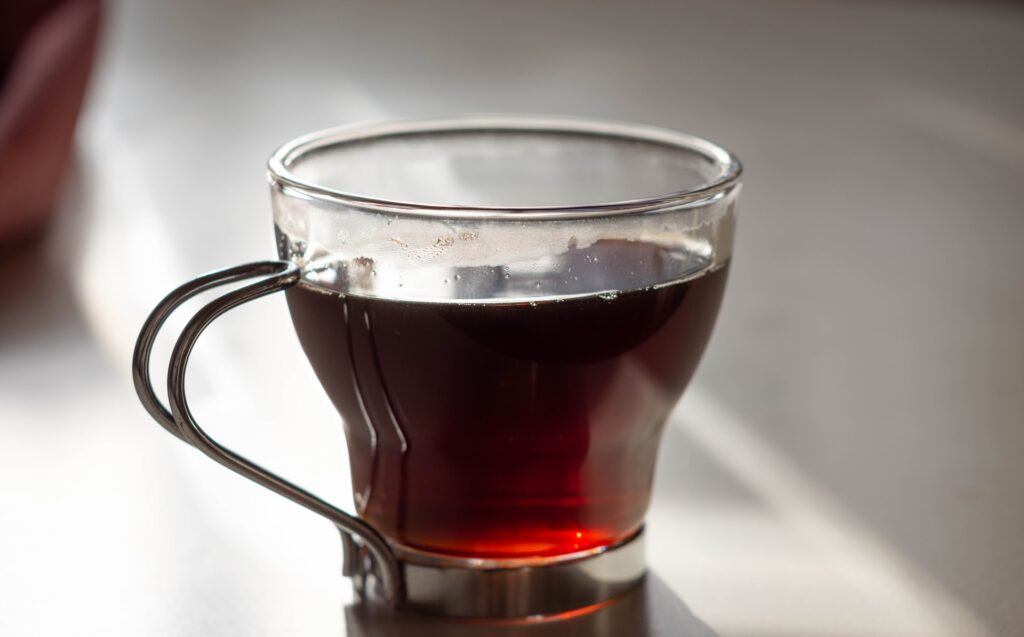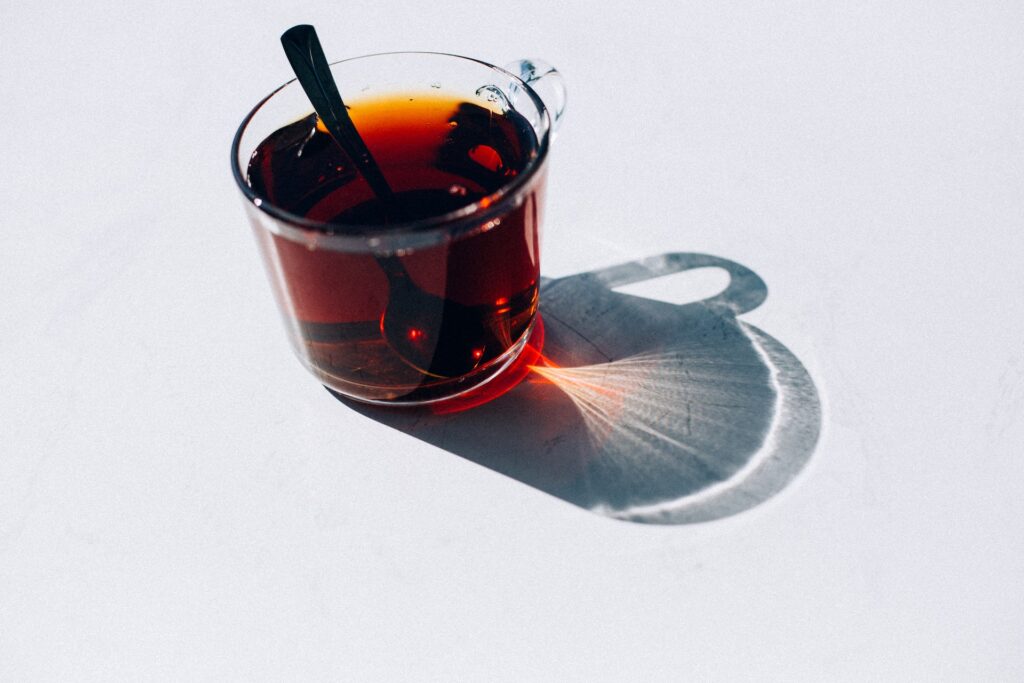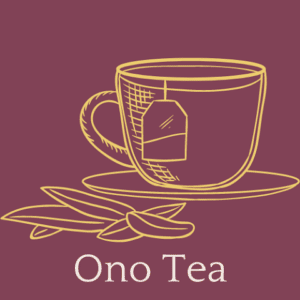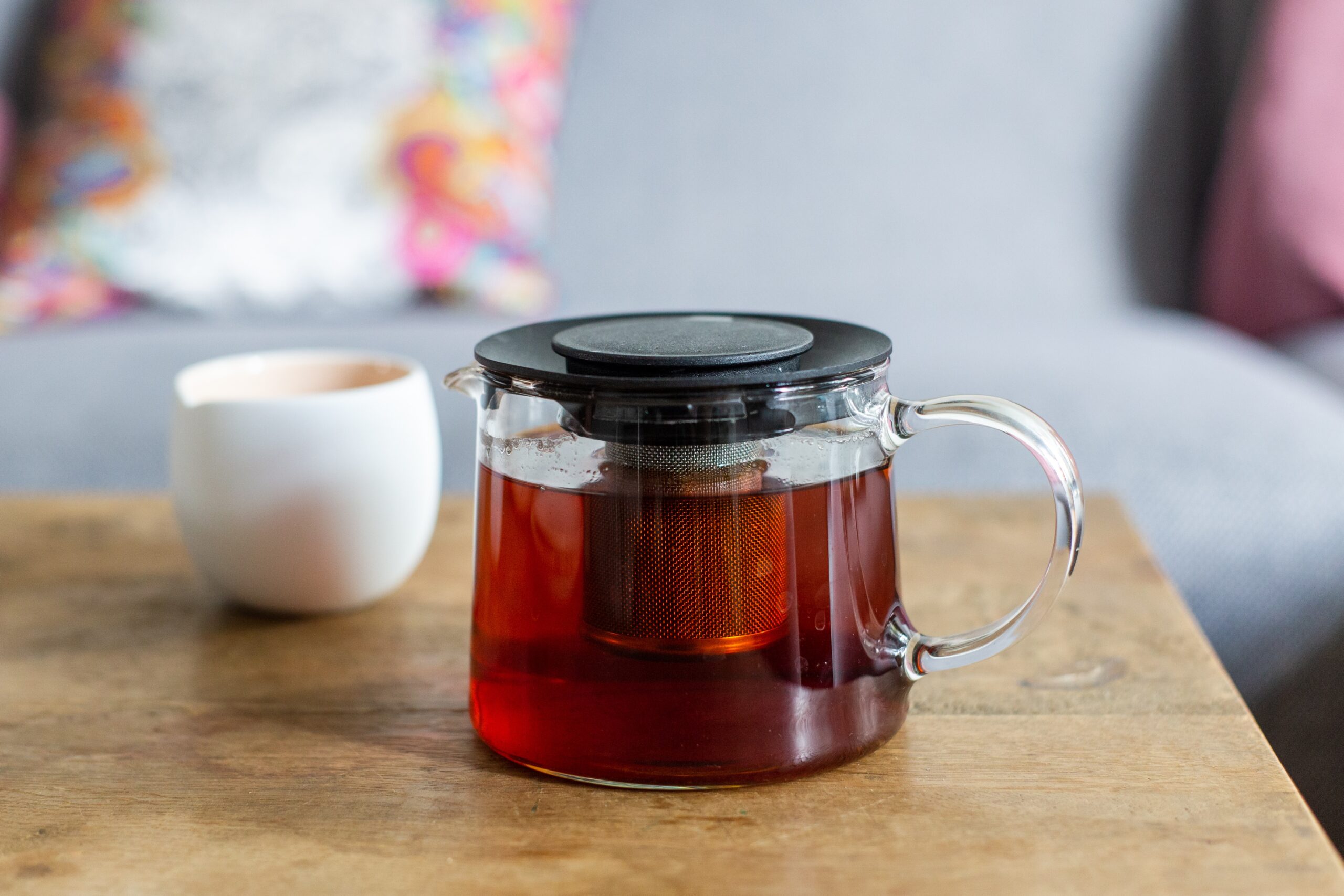As a tea connoisseur, you are aware of whether black tea and oolong tea are the same. However, a beginner will always be confused when presented with a predicament. It is a no-brainer for them to differentiate between black, white, and green tea. The color gives away the difference.
Black tea and oolong tea, on the other hand, can both have the same dark tone. They are both black, so you may think that they are similar. However, the taste profile, nutrient contents, and composition of black tea are exceedingly different from those of oolong tea.
Moreover, a few more aspects can help you understand why these two are different. You can use them to immediately distinguish oolong tea from black tea. You can also use these aspects to choose which one works best for you.
Difference Between Oolong Tea and Black Tea
The following are some of the key differences between black and oolong tea:
Origin
Oolong Tea
You can trace the origin of oolong tea back to the Ming dynasty in the 14th century. It was a delicacy reserved for the elite. The word oolong translates to the black dragon in Chinese.
The emperors and their families were the only ones who usually had the pleasure of partaking in this tea. Later on, it became popular in the courts. In the 19th century, the plantations of oolong tea extended to different regions. Taiwan was one of the first countries to cultivate it on a large scale. Afterward, it became a commodity and was widely exported across the globe. Today, multiple Asian countries produce numerous varieties of oolong tea leaves.
Black Tea
The accidental discovery of black tea leaves occurred in the 17th century. Legend has it that the leaves were left out in the sun for too long during an army stay at the plantation site. Other narratives indicate that it was the intentional outcome of the plan to prolong the shelf life of tea leaves.
The highly oxidized leaves transformed into black tea. However, it was European colonization that popularized the use of black tea. The nobles of society only had access to exquisite and exotic black tea. However, endeavors for indigenous tea cultivation made it readily available to the public.

Oxidation Level
There are multiple versions of oolong tea available on the market. Each country exports a different form of oolong tea leaves. Moreover, even various regions in a country may produce varieties of oolong tea. However, all leaves come from the Camellia sinensis plant. The oxidation of tea leaves leads to the formation of oolong tea.
The moment leaves are plucked from the plant, they are left to dry. The air exposure initiates the oxidation process in leaves, and they begin to change color. The loose-leaf tea is usually curled, which is characteristic of oolong tea.
The variants of oolong tea in Taiwan have a lighter color. They are jade and not highly oxidized as compared to black tea leaves. China imports at least four varieties of oolong tea. These include the High Mountains, Phoenix, Iron Goddess, and Wuyi. These vary in the degree of oxidation. Oolong teas usually have more than 10% oxidation, and it may extend to 90%.
The black teas are completely oxidized. Its leaves have a darker and deeper hue. They are left for a long time in the sun to oxidize. To enhance the oxidation, farmers macerate the black tea leaves. It maximizes air exposure and oxygen contact with the tea leaves.
Taste
The taste of oolong and black tea will highly depend on the variety you get. The process used to oxidize and roll them determines their flavor profile. Your brewing methods also play an active role in producing the right flavor.
Oolong teas have a floral taste. If the tea leaves are lighter in color than the sweet. The darker the leaves are, the more bitter their taste will be in the brewed tea. The dark version has a grassy taste. The first few sips will have a mellow essence. Most oolong tea leaves have a rich and dense taste. Your palate will experience a nutty taste accompanied by a charred and sesame seed-like punch.
The black has a highly intense flavor. It creates a kick in your mouth and consumes your taste buds. The flavor of the tea becomes more potent as you break it at longer intervals.
Black tea highly resembles the cereal called malt. The profile will also have caramel tones. If you are an avid coffee consumer, the taste will fit your palate. The earthy blend is quite powerful, and your mouth will retain the flavor for a long time. Black tea can also be sweet rather than bitter. However, it is quite rare and may depend on the processing methods.
Aroma
The aroma of oolong tea is floral. It also translated into its taste. You will get the scent of orchids as the tea brews in your pot. It has a fresh fragrance that is highly enticing for your taste buds.
High-quality oolong teas have a more inviting scent. In contrast, black tea has an intense, earthy aroma that fills the room. The natural scent of black tea arises due to the terpenes present in its structure. These have a subdued scent; however, as the tea brews, its fragrance becomes more pronounced.
Health Benefits
Oolong teas have a wide nutrient profile. It has various essential minerals. These include calcium, potassium, and magnesium. These trace minerals are necessary for your overall well-being.
These support the multiple physiological processes in your body. Therefore, you must ensure your body receives an optimal level of these minerals. Adding oolong tea to your diet can bring along trace minerals.
The antioxidants can help your body get rid of the toxins. They reduce the oxidative stress in your organs and enable them to function efficiently. Studies suggest that oolong tea can reduce the incidence of diabetes. It can slow down the onset of type 2 diabetes.
Research also indicates that it may lower the level of glucose in your blood. As a result, it eventually lowers the risk of diabetes. It reduces the cholesterol uptake in your body. Oolong tea may also help you regulate your blood pressure.
These combined effects may also limit the chances of having heart disease. Oolong tea is highly beneficial for weight loss. Most people include it in their routine. It helps burn the accumulated fat in your tissues.
Black tea also has a range of antioxidants. It has minerals and vitamins that can help you regain your health. Black tea also shows remarkable benefits for your heart’s health. It reduces the risk of heart attacks, obesity, and stroke.
There is a striking difference in the incidence of heart disease among people who consume black tea and those who do not.
It also decreases the content of bad cholesterol in your body. It is the same cholesterol that deposits in your arteries and blocks the blood flow, leading to a heart attack.
It also shows improvement in your gut health. It promotes the growth of gut microbiomes.
These include the probiotics in the gut, which are the bacteria that keep your digestive system healthy. However, it kills the harmful microbes that pose a risk to your health.
It also improves your bowel movements and repairs the walls of your intestines and tracts. Blood pressure regulation also assists with hypertension.
It also enhances the function of insulin in your body. As a result, it breaks down the excess glucose and stores it as glycogen. Therefore, drinking black tea after meals can help pre-diabetic individuals reduce the onset of diabetes. Research also shows that black tea can be useful in cancer prevention.

Adding Milk
Oolong tea is brewed with water. It tastes best when you make it with water. Milk can significantly spoil the taste of oolong tea.
It can interfere with the flavor profile. Moreover, it may also overcome the floral aroma of the oolong tea. In the case of black tea, people usually add milk. Black tea can be bitter for some people.
Milk can act as a natural sweetener for black tea. Milk reduces the effect of tannins, which produce an earthy sensation. It is not recommended to add milk to oolong tea; however, you can add it to black tea.
There is a version of oolong tea that has a creamy texture.
It does not contain milk. However, upon brewing, it will produce a silky, sweet, and frothy texture that resembles milk. Therefore, it goes by the name of milk oolong tea.
It has a thick consistency and will remind your taste buds of butter. If you do not like the bitterness of the other varieties of oolong tea, then you can go for the milk oolong tea.
Caffeine Content
Oolong tea has an intermediate level of caffeine among all teas. The content depends on the production and brewing methods. However, it is estimated that oolong tea can have caffeine levels of 10mg to 40mg. In contrast, black tea has the highest level of caffeine. The caffeine content in black tea can be almost 60mg.
The high oxidation of black tea enhances the caffeine content.
Black tea can even have more than 80 mg of caffeine with a long infusion time. It is quite a bit less than coffee, which has more than 90 mg of caffeine per cup. However, it is a sufficient amount of caffeine that can keep you recharged for a few hours.
The caffeine content of tea will also depend on your consumption levels.
Similarities
The oolong and black teas all come from the same tea plant, the Camellia sinensis plant. This plant also produces black, oolong, white, and green tea.
The processing of the oolong and black teas all occurs through the same method. The tea plant leaves are withered and dried. These are then cooled and slightly rolled. Air exposure causes the tea plant’s leaves to oxidize.
These are then roasted, rolled, and dried again. Afterward, they are sorted according to size and color. The tea plant leaves are then finally packed and transported.
Oolong and black tea also have caffeine and act as antioxidants.
Drinking oolong, green, and black teas can help you lose weight. Moreover, oolong and black teas can prevent diabetes and heart disease.
FAQs
1. How Black Teas are different from Green Teas?
Green tea is less oxidized than both oolong and black teas. It is lighter in color and has a delicate and sweet taste. Green tea is not processed in the same way as black tea. It also originates from China and provides considerable health benefits.
2. Which one should I use, Oolong or Black Tea?
Consumption of oolong and black teas depends on your taste buds. If you can handle the bitterness of black tea, you can drink it. However, if you like light, floral tastes, then go for oolong tea.
3. Are Black Teas healthier than Oolong?
Both herbal teas contain high levels of antioxidants. However, they are more potent in oolong tea than black tea. Oolong tea also removes toxic chemicals called mutagens from your body. Therefore, your health will improve more when drinking oolong tea than black tea.
4. Can I lose weight faster by using Green Tea than Black?
Green teas are quite effective in lowering your weight. Black tea also helps you burn down the fat. Research shows that all teas have a similar effect on your weight due to antioxidant properties.
5. Can I have Oolong Tea every day?
You can have oolong tea every day. You can also have black, white, or green tea every day. They can provide you with a range of health benefits. Moreover, oolong tea has sufficient caffeine content to keep you active.
Conclusion
Drinking tea can help be quite beneficial for your well-being. You can have oolong black and green tea to keep your weight in check.
Dark oolong teas can maintain the function of various organs. Heavily oxidized oolong teas can also provide more caffeine. Drinking tea can also help you stay active and complete your tasks timely. As a beginner, you can start with dark oolong tea. Once you get acclimatized to the taste, you can opt for the bitter black tea.
So there you have it, folks! There is no right or wrong choice here. It is simply a matter of making a choice that best suits you.

